#church club for the lonely tour
Text








#nessa barrett#baby cowboy#janesa barrett#icon nessa barrett#icons nessa barrett#nessa barrett icon#nessa barrett icons#icons#church club for the lonely tour#church club for the lonely#club heaven#girl in new york#girls icons#hell is a teenage girl#hiatg#the one that should've got away#young forever#american jesus#heartbreake in the hamptons
141 notes
·
View notes
Text

Church club for the lonely tour🤍🤠💋
8 notes
·
View notes
Text



church club for the lonely tour: orlando, fl !୧⊹
4 notes
·
View notes
Text
Nuclear Valdez - "Shelter"
Nuclear Valdez is an American rock band from Miami, Florida, United States. The band members all are of Latin American descent and were born outside of the United States
Nuclear Valdez was formed in Miami in 1983 by vocalist and guitarist Froilan Sosa and lead guitarist Jorge Barcala, who replaced Angel Forte when he left the band. Bassist and vocalist Juan Diaz joined the following year, and drummer and vocalist Robert Slade LeMont the year after. Sosa was born in the Dominican Republic, while the other three members were born in Cuba. They took their name from a former coworker of Diaz who had an "explosive temper."
After several years as a popular club band and opening act in the South Florida music scene, the band was signed to Epic Records in 1989. Their debut album, I Am I, was released that year, with production from Richard Gottehrer and Thom Panunzio. Featured artists on the album included Bruce Brody (Lone Justice, Patti Smith Group), Benmont Tench (Tom Petty and the Heartbreakers), and Meredith Brooks. The track "Summer" from the album became a minor radio hit, and was put into active rotation on MTV. Nuclear Valdez performed the track on MTV Unplugged later that year, making them the first all-Latino act to appear on the show.
The band did an MTV promo spot with video director Paula Grief and performed on an early episode of MTV Unplugged with members of The Alarm. They opened for numerous groups that came through their home base in Miami: Living Colour, Jane's Addiction, Dead Milkmen, Ronnie Wood, Hoodoo Gurus, among others. The band did an extensive tour of the US opening up for The Hooters. US tour followed by an intensive European tour as the supporting act for The Church. Song "Dance Where the Bullets Fly" from the second album was used in one of the season finales of Melrose Place.
The members of the band are:
Froilan Sosa - Vocals / Guitar / Keyboards
Juan Luis Diaz - Bass
Robert Slade LeMont - Drums
Jorge Barcala - Lead Guitar (original band guitarist on first two albums)
Rafael Tarrago - Lead Guitar

Nuclear Valdez members in 1990
0 notes
Photo

Slunchev Bryag
Nessebur (pop. 7,000), provides a striking contrast to Slunchev Bryag. It is a wonder-town, a fantasy come true, consisting of a rocky peninsula, some 900 yards long and 300 yards wide, jutting out into the sea, with lonely houses perched on it. A very narrow isthmus connects this island with the mainland. At night when it is all lit up, it resembles a floating ship, something out of this world.
Nessebur is now a museum town with fine old churches, the oldest of which were built in the 5 th and 6th centuries. Among them are the Old Metropolitan Church in the centre of the town. Its foundations and walls are still preserved; the Basilica near the shore is also worth seeing; the Church of St John the Baptist, built in the 10th century is entirely preserved. Its frescoes are from the 16th and 17th centuries, an archaeological museum is now housed in it. The Church of Stephan, 10th century, also known as the New Metropolitan Church has well preserved murals from 16th —17th century. The bishop’s throne and pulpit are decorated with wood- carvings.
Most churches are in the ‘pictorial style’ and were built in the 13 th-14th centuries such as the Church of St Theodore, of which only the northern and western facades are preserved city tours istanbul; the Church of St Paraskeva; the Church of Christ Panfokrator, in the centre of the town, comparatively well preserved; the Church of St John Aliturgetos, above the seaport.
In the town there is a permanent ethnographic exhibition of national costumes from the Bourgas area. It is held in the Mouskoyani House, built 1840 which is also the Head Office of the Nessebur Museums. TeL 34-94.
Hotel Messembria
Hotel Messembria, two stars, 24 beds and one suite, restaurant, bar, Rent-a-Car service. TeL 32-55.
About two kilometres west of Nessebur is the village of Aheioit chiefly known for the decisive battle which took place here on August 20, 917 between the Bulgarian troops of Tsar Simeon and the Byzantine troops led by Leo Foka in which the Byzantine troops suffered a defeat.
Some nine kilometres south of Aheloi is the town of Pomorie (pop. 12,000), situated on a narrow rocky peninsula. It was founded early in the 4th century B.C. under the name of Anhialo by emigrants from Apollonia (present-day Sozopol). All the wooden buildings were destroyed by fire in 1906. A small corner in National Revival style architecture has been preserved in the eastern part of the town next to the breakwater. Of particular interest is the burial mound near Pomorie. It is an early combination of the Thracian custom of beehive tombs and tumuli in the style of the Roman mausoleums. The tomb is fully restored and open to visitors. To the wsst of present-day Pomorie are the remains of an ancient settlement destroyed by the Avars in the 6th century. The sights include the Christ Church (1784) with valuable icons; the Monastery of St George (1856), whose wooden buildings are built round a quadrangle; Yavorov’s Rocks from where the Bulgarian poet, Peyu K. Yavorov, used to watch the sea.
Balkantourist hotels: Pomorie, two stars, overhangs the sea. It has 214 beds, two suites, restaurant, banqueting hall and night club Not far from the town is the Evropa camp site, two stars. Pomorie is well-known for its curative mud.
Balkantourist Bureau 49, N. Luskov Street.
0 notes
Photo
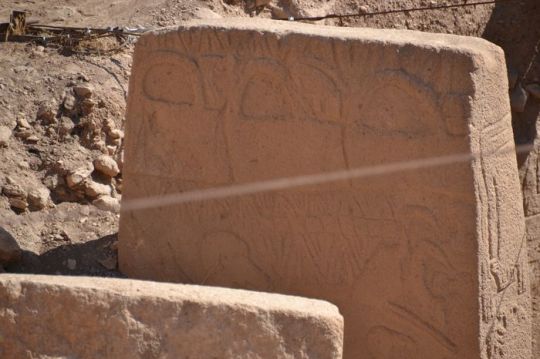
Slunchev Bryag
Nessebur (pop. 7,000), provides a striking contrast to Slunchev Bryag. It is a wonder-town, a fantasy come true, consisting of a rocky peninsula, some 900 yards long and 300 yards wide, jutting out into the sea, with lonely houses perched on it. A very narrow isthmus connects this island with the mainland. At night when it is all lit up, it resembles a floating ship, something out of this world.
Nessebur is now a museum town with fine old churches, the oldest of which were built in the 5 th and 6th centuries. Among them are the Old Metropolitan Church in the centre of the town. Its foundations and walls are still preserved; the Basilica near the shore is also worth seeing; the Church of St John the Baptist, built in the 10th century is entirely preserved. Its frescoes are from the 16th and 17th centuries, an archaeological museum is now housed in it. The Church of Stephan, 10th century, also known as the New Metropolitan Church has well preserved murals from 16th —17th century. The bishop’s throne and pulpit are decorated with wood- carvings.
Most churches are in the ‘pictorial style’ and were built in the 13 th-14th centuries such as the Church of St Theodore, of which only the northern and western facades are preserved city tours istanbul; the Church of St Paraskeva; the Church of Christ Panfokrator, in the centre of the town, comparatively well preserved; the Church of St John Aliturgetos, above the seaport.
In the town there is a permanent ethnographic exhibition of national costumes from the Bourgas area. It is held in the Mouskoyani House, built 1840 which is also the Head Office of the Nessebur Museums. TeL 34-94.
Hotel Messembria
Hotel Messembria, two stars, 24 beds and one suite, restaurant, bar, Rent-a-Car service. TeL 32-55.
About two kilometres west of Nessebur is the village of Aheioit chiefly known for the decisive battle which took place here on August 20, 917 between the Bulgarian troops of Tsar Simeon and the Byzantine troops led by Leo Foka in which the Byzantine troops suffered a defeat.
Some nine kilometres south of Aheloi is the town of Pomorie (pop. 12,000), situated on a narrow rocky peninsula. It was founded early in the 4th century B.C. under the name of Anhialo by emigrants from Apollonia (present-day Sozopol). All the wooden buildings were destroyed by fire in 1906. A small corner in National Revival style architecture has been preserved in the eastern part of the town next to the breakwater. Of particular interest is the burial mound near Pomorie. It is an early combination of the Thracian custom of beehive tombs and tumuli in the style of the Roman mausoleums. The tomb is fully restored and open to visitors. To the wsst of present-day Pomorie are the remains of an ancient settlement destroyed by the Avars in the 6th century. The sights include the Christ Church (1784) with valuable icons; the Monastery of St George (1856), whose wooden buildings are built round a quadrangle; Yavorov’s Rocks from where the Bulgarian poet, Peyu K. Yavorov, used to watch the sea.
Balkantourist hotels: Pomorie, two stars, overhangs the sea. It has 214 beds, two suites, restaurant, banqueting hall and night club Not far from the town is the Evropa camp site, two stars. Pomorie is well-known for its curative mud.
Balkantourist Bureau 49, N. Luskov Street.
0 notes
Photo

Slunchev Bryag
Nessebur (pop. 7,000), provides a striking contrast to Slunchev Bryag. It is a wonder-town, a fantasy come true, consisting of a rocky peninsula, some 900 yards long and 300 yards wide, jutting out into the sea, with lonely houses perched on it. A very narrow isthmus connects this island with the mainland. At night when it is all lit up, it resembles a floating ship, something out of this world.
Nessebur is now a museum town with fine old churches, the oldest of which were built in the 5 th and 6th centuries. Among them are the Old Metropolitan Church in the centre of the town. Its foundations and walls are still preserved; the Basilica near the shore is also worth seeing; the Church of St John the Baptist, built in the 10th century is entirely preserved. Its frescoes are from the 16th and 17th centuries, an archaeological museum is now housed in it. The Church of Stephan, 10th century, also known as the New Metropolitan Church has well preserved murals from 16th —17th century. The bishop’s throne and pulpit are decorated with wood- carvings.
Most churches are in the ‘pictorial style’ and were built in the 13 th-14th centuries such as the Church of St Theodore, of which only the northern and western facades are preserved city tours istanbul; the Church of St Paraskeva; the Church of Christ Panfokrator, in the centre of the town, comparatively well preserved; the Church of St John Aliturgetos, above the seaport.
In the town there is a permanent ethnographic exhibition of national costumes from the Bourgas area. It is held in the Mouskoyani House, built 1840 which is also the Head Office of the Nessebur Museums. TeL 34-94.
Hotel Messembria
Hotel Messembria, two stars, 24 beds and one suite, restaurant, bar, Rent-a-Car service. TeL 32-55.
About two kilometres west of Nessebur is the village of Aheioit chiefly known for the decisive battle which took place here on August 20, 917 between the Bulgarian troops of Tsar Simeon and the Byzantine troops led by Leo Foka in which the Byzantine troops suffered a defeat.
Some nine kilometres south of Aheloi is the town of Pomorie (pop. 12,000), situated on a narrow rocky peninsula. It was founded early in the 4th century B.C. under the name of Anhialo by emigrants from Apollonia (present-day Sozopol). All the wooden buildings were destroyed by fire in 1906. A small corner in National Revival style architecture has been preserved in the eastern part of the town next to the breakwater. Of particular interest is the burial mound near Pomorie. It is an early combination of the Thracian custom of beehive tombs and tumuli in the style of the Roman mausoleums. The tomb is fully restored and open to visitors. To the wsst of present-day Pomorie are the remains of an ancient settlement destroyed by the Avars in the 6th century. The sights include the Christ Church (1784) with valuable icons; the Monastery of St George (1856), whose wooden buildings are built round a quadrangle; Yavorov’s Rocks from where the Bulgarian poet, Peyu K. Yavorov, used to watch the sea.
Balkantourist hotels: Pomorie, two stars, overhangs the sea. It has 214 beds, two suites, restaurant, banqueting hall and night club Not far from the town is the Evropa camp site, two stars. Pomorie is well-known for its curative mud.
Balkantourist Bureau 49, N. Luskov Street.
0 notes
Photo
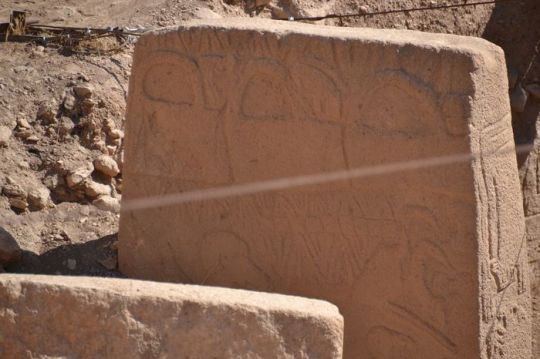
Slunchev Bryag
Nessebur (pop. 7,000), provides a striking contrast to Slunchev Bryag. It is a wonder-town, a fantasy come true, consisting of a rocky peninsula, some 900 yards long and 300 yards wide, jutting out into the sea, with lonely houses perched on it. A very narrow isthmus connects this island with the mainland. At night when it is all lit up, it resembles a floating ship, something out of this world.
Nessebur is now a museum town with fine old churches, the oldest of which were built in the 5 th and 6th centuries. Among them are the Old Metropolitan Church in the centre of the town. Its foundations and walls are still preserved; the Basilica near the shore is also worth seeing; the Church of St John the Baptist, built in the 10th century is entirely preserved. Its frescoes are from the 16th and 17th centuries, an archaeological museum is now housed in it. The Church of Stephan, 10th century, also known as the New Metropolitan Church has well preserved murals from 16th —17th century. The bishop’s throne and pulpit are decorated with wood- carvings.
Most churches are in the ‘pictorial style’ and were built in the 13 th-14th centuries such as the Church of St Theodore, of which only the northern and western facades are preserved city tours istanbul; the Church of St Paraskeva; the Church of Christ Panfokrator, in the centre of the town, comparatively well preserved; the Church of St John Aliturgetos, above the seaport.
In the town there is a permanent ethnographic exhibition of national costumes from the Bourgas area. It is held in the Mouskoyani House, built 1840 which is also the Head Office of the Nessebur Museums. TeL 34-94.
Hotel Messembria
Hotel Messembria, two stars, 24 beds and one suite, restaurant, bar, Rent-a-Car service. TeL 32-55.
About two kilometres west of Nessebur is the village of Aheioit chiefly known for the decisive battle which took place here on August 20, 917 between the Bulgarian troops of Tsar Simeon and the Byzantine troops led by Leo Foka in which the Byzantine troops suffered a defeat.
Some nine kilometres south of Aheloi is the town of Pomorie (pop. 12,000), situated on a narrow rocky peninsula. It was founded early in the 4th century B.C. under the name of Anhialo by emigrants from Apollonia (present-day Sozopol). All the wooden buildings were destroyed by fire in 1906. A small corner in National Revival style architecture has been preserved in the eastern part of the town next to the breakwater. Of particular interest is the burial mound near Pomorie. It is an early combination of the Thracian custom of beehive tombs and tumuli in the style of the Roman mausoleums. The tomb is fully restored and open to visitors. To the wsst of present-day Pomorie are the remains of an ancient settlement destroyed by the Avars in the 6th century. The sights include the Christ Church (1784) with valuable icons; the Monastery of St George (1856), whose wooden buildings are built round a quadrangle; Yavorov’s Rocks from where the Bulgarian poet, Peyu K. Yavorov, used to watch the sea.
Balkantourist hotels: Pomorie, two stars, overhangs the sea. It has 214 beds, two suites, restaurant, banqueting hall and night club Not far from the town is the Evropa camp site, two stars. Pomorie is well-known for its curative mud.
Balkantourist Bureau 49, N. Luskov Street.
0 notes
Photo
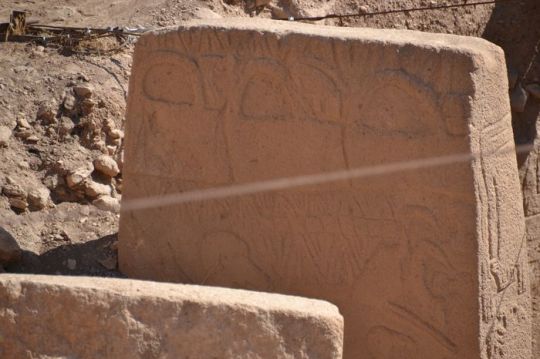
Slunchev Bryag
Nessebur (pop. 7,000), provides a striking contrast to Slunchev Bryag. It is a wonder-town, a fantasy come true, consisting of a rocky peninsula, some 900 yards long and 300 yards wide, jutting out into the sea, with lonely houses perched on it. A very narrow isthmus connects this island with the mainland. At night when it is all lit up, it resembles a floating ship, something out of this world.
Nessebur is now a museum town with fine old churches, the oldest of which were built in the 5 th and 6th centuries. Among them are the Old Metropolitan Church in the centre of the town. Its foundations and walls are still preserved; the Basilica near the shore is also worth seeing; the Church of St John the Baptist, built in the 10th century is entirely preserved. Its frescoes are from the 16th and 17th centuries, an archaeological museum is now housed in it. The Church of Stephan, 10th century, also known as the New Metropolitan Church has well preserved murals from 16th —17th century. The bishop’s throne and pulpit are decorated with wood- carvings.
Most churches are in the ‘pictorial style’ and were built in the 13 th-14th centuries such as the Church of St Theodore, of which only the northern and western facades are preserved city tours istanbul; the Church of St Paraskeva; the Church of Christ Panfokrator, in the centre of the town, comparatively well preserved; the Church of St John Aliturgetos, above the seaport.
In the town there is a permanent ethnographic exhibition of national costumes from the Bourgas area. It is held in the Mouskoyani House, built 1840 which is also the Head Office of the Nessebur Museums. TeL 34-94.
Hotel Messembria
Hotel Messembria, two stars, 24 beds and one suite, restaurant, bar, Rent-a-Car service. TeL 32-55.
About two kilometres west of Nessebur is the village of Aheioit chiefly known for the decisive battle which took place here on August 20, 917 between the Bulgarian troops of Tsar Simeon and the Byzantine troops led by Leo Foka in which the Byzantine troops suffered a defeat.
Some nine kilometres south of Aheloi is the town of Pomorie (pop. 12,000), situated on a narrow rocky peninsula. It was founded early in the 4th century B.C. under the name of Anhialo by emigrants from Apollonia (present-day Sozopol). All the wooden buildings were destroyed by fire in 1906. A small corner in National Revival style architecture has been preserved in the eastern part of the town next to the breakwater. Of particular interest is the burial mound near Pomorie. It is an early combination of the Thracian custom of beehive tombs and tumuli in the style of the Roman mausoleums. The tomb is fully restored and open to visitors. To the wsst of present-day Pomorie are the remains of an ancient settlement destroyed by the Avars in the 6th century. The sights include the Christ Church (1784) with valuable icons; the Monastery of St George (1856), whose wooden buildings are built round a quadrangle; Yavorov’s Rocks from where the Bulgarian poet, Peyu K. Yavorov, used to watch the sea.
Balkantourist hotels: Pomorie, two stars, overhangs the sea. It has 214 beds, two suites, restaurant, banqueting hall and night club Not far from the town is the Evropa camp site, two stars. Pomorie is well-known for its curative mud.
Balkantourist Bureau 49, N. Luskov Street.
0 notes
Photo
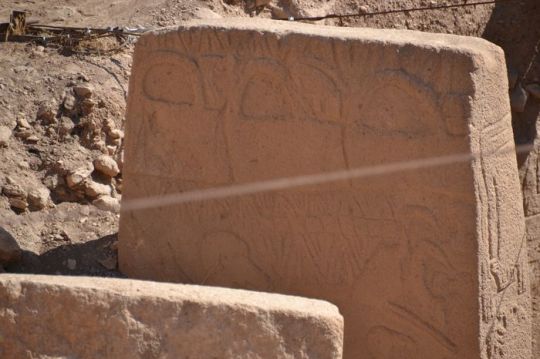
Slunchev Bryag
Nessebur (pop. 7,000), provides a striking contrast to Slunchev Bryag. It is a wonder-town, a fantasy come true, consisting of a rocky peninsula, some 900 yards long and 300 yards wide, jutting out into the sea, with lonely houses perched on it. A very narrow isthmus connects this island with the mainland. At night when it is all lit up, it resembles a floating ship, something out of this world.
Nessebur is now a museum town with fine old churches, the oldest of which were built in the 5 th and 6th centuries. Among them are the Old Metropolitan Church in the centre of the town. Its foundations and walls are still preserved; the Basilica near the shore is also worth seeing; the Church of St John the Baptist, built in the 10th century is entirely preserved. Its frescoes are from the 16th and 17th centuries, an archaeological museum is now housed in it. The Church of Stephan, 10th century, also known as the New Metropolitan Church has well preserved murals from 16th —17th century. The bishop’s throne and pulpit are decorated with wood- carvings.
Most churches are in the ‘pictorial style’ and were built in the 13 th-14th centuries such as the Church of St Theodore, of which only the northern and western facades are preserved city tours istanbul; the Church of St Paraskeva; the Church of Christ Panfokrator, in the centre of the town, comparatively well preserved; the Church of St John Aliturgetos, above the seaport.
In the town there is a permanent ethnographic exhibition of national costumes from the Bourgas area. It is held in the Mouskoyani House, built 1840 which is also the Head Office of the Nessebur Museums. TeL 34-94.
Hotel Messembria
Hotel Messembria, two stars, 24 beds and one suite, restaurant, bar, Rent-a-Car service. TeL 32-55.
About two kilometres west of Nessebur is the village of Aheioit chiefly known for the decisive battle which took place here on August 20, 917 between the Bulgarian troops of Tsar Simeon and the Byzantine troops led by Leo Foka in which the Byzantine troops suffered a defeat.
Some nine kilometres south of Aheloi is the town of Pomorie (pop. 12,000), situated on a narrow rocky peninsula. It was founded early in the 4th century B.C. under the name of Anhialo by emigrants from Apollonia (present-day Sozopol). All the wooden buildings were destroyed by fire in 1906. A small corner in National Revival style architecture has been preserved in the eastern part of the town next to the breakwater. Of particular interest is the burial mound near Pomorie. It is an early combination of the Thracian custom of beehive tombs and tumuli in the style of the Roman mausoleums. The tomb is fully restored and open to visitors. To the wsst of present-day Pomorie are the remains of an ancient settlement destroyed by the Avars in the 6th century. The sights include the Christ Church (1784) with valuable icons; the Monastery of St George (1856), whose wooden buildings are built round a quadrangle; Yavorov’s Rocks from where the Bulgarian poet, Peyu K. Yavorov, used to watch the sea.
Balkantourist hotels: Pomorie, two stars, overhangs the sea. It has 214 beds, two suites, restaurant, banqueting hall and night club Not far from the town is the Evropa camp site, two stars. Pomorie is well-known for its curative mud.
Balkantourist Bureau 49, N. Luskov Street.
0 notes
Photo

Slunchev Bryag
Nessebur (pop. 7,000), provides a striking contrast to Slunchev Bryag. It is a wonder-town, a fantasy come true, consisting of a rocky peninsula, some 900 yards long and 300 yards wide, jutting out into the sea, with lonely houses perched on it. A very narrow isthmus connects this island with the mainland. At night when it is all lit up, it resembles a floating ship, something out of this world.
Nessebur is now a museum town with fine old churches, the oldest of which were built in the 5 th and 6th centuries. Among them are the Old Metropolitan Church in the centre of the town. Its foundations and walls are still preserved; the Basilica near the shore is also worth seeing; the Church of St John the Baptist, built in the 10th century is entirely preserved. Its frescoes are from the 16th and 17th centuries, an archaeological museum is now housed in it. The Church of Stephan, 10th century, also known as the New Metropolitan Church has well preserved murals from 16th —17th century. The bishop’s throne and pulpit are decorated with wood- carvings.
Most churches are in the ‘pictorial style’ and were built in the 13 th-14th centuries such as the Church of St Theodore, of which only the northern and western facades are preserved city tours istanbul; the Church of St Paraskeva; the Church of Christ Panfokrator, in the centre of the town, comparatively well preserved; the Church of St John Aliturgetos, above the seaport.
In the town there is a permanent ethnographic exhibition of national costumes from the Bourgas area. It is held in the Mouskoyani House, built 1840 which is also the Head Office of the Nessebur Museums. TeL 34-94.
Hotel Messembria
Hotel Messembria, two stars, 24 beds and one suite, restaurant, bar, Rent-a-Car service. TeL 32-55.
About two kilometres west of Nessebur is the village of Aheioit chiefly known for the decisive battle which took place here on August 20, 917 between the Bulgarian troops of Tsar Simeon and the Byzantine troops led by Leo Foka in which the Byzantine troops suffered a defeat.
Some nine kilometres south of Aheloi is the town of Pomorie (pop. 12,000), situated on a narrow rocky peninsula. It was founded early in the 4th century B.C. under the name of Anhialo by emigrants from Apollonia (present-day Sozopol). All the wooden buildings were destroyed by fire in 1906. A small corner in National Revival style architecture has been preserved in the eastern part of the town next to the breakwater. Of particular interest is the burial mound near Pomorie. It is an early combination of the Thracian custom of beehive tombs and tumuli in the style of the Roman mausoleums. The tomb is fully restored and open to visitors. To the wsst of present-day Pomorie are the remains of an ancient settlement destroyed by the Avars in the 6th century. The sights include the Christ Church (1784) with valuable icons; the Monastery of St George (1856), whose wooden buildings are built round a quadrangle; Yavorov’s Rocks from where the Bulgarian poet, Peyu K. Yavorov, used to watch the sea.
Balkantourist hotels: Pomorie, two stars, overhangs the sea. It has 214 beds, two suites, restaurant, banqueting hall and night club Not far from the town is the Evropa camp site, two stars. Pomorie is well-known for its curative mud.
Balkantourist Bureau 49, N. Luskov Street.
0 notes
Text









#nessa barrett#janesa barrett#baby cowboy#icon nessa barrett#icons nessa barrett#nessa barrett icon#nessa barrett icons#icons#club heaven#church club for the lonely tour#church club for the lonely#festival#hell is a teenage girl#hiatg#american jesus#young forever tour#young forever#blond girl#blond hair#woman in music
61 notes
·
View notes
Photo

Slunchev Bryag
Nessebur (pop. 7,000), provides a striking contrast to Slunchev Bryag. It is a wonder-town, a fantasy come true, consisting of a rocky peninsula, some 900 yards long and 300 yards wide, jutting out into the sea, with lonely houses perched on it. A very narrow isthmus connects this island with the mainland. At night when it is all lit up, it resembles a floating ship, something out of this world.
Nessebur is now a museum town with fine old churches, the oldest of which were built in the 5 th and 6th centuries. Among them are the Old Metropolitan Church in the centre of the town. Its foundations and walls are still preserved; the Basilica near the shore is also worth seeing; the Church of St John the Baptist, built in the 10th century is entirely preserved. Its frescoes are from the 16th and 17th centuries, an archaeological museum is now housed in it. The Church of Stephan, 10th century, also known as the New Metropolitan Church has well preserved murals from 16th —17th century. The bishop’s throne and pulpit are decorated with wood- carvings.
Most churches are in the ‘pictorial style’ and were built in the 13 th-14th centuries such as the Church of St Theodore, of which only the northern and western facades are preserved city tours istanbul; the Church of St Paraskeva; the Church of Christ Panfokrator, in the centre of the town, comparatively well preserved; the Church of St John Aliturgetos, above the seaport.
In the town there is a permanent ethnographic exhibition of national costumes from the Bourgas area. It is held in the Mouskoyani House, built 1840 which is also the Head Office of the Nessebur Museums. TeL 34-94.
Hotel Messembria
Hotel Messembria, two stars, 24 beds and one suite, restaurant, bar, Rent-a-Car service. TeL 32-55.
About two kilometres west of Nessebur is the village of Aheioit chiefly known for the decisive battle which took place here on August 20, 917 between the Bulgarian troops of Tsar Simeon and the Byzantine troops led by Leo Foka in which the Byzantine troops suffered a defeat.
Some nine kilometres south of Aheloi is the town of Pomorie (pop. 12,000), situated on a narrow rocky peninsula. It was founded early in the 4th century B.C. under the name of Anhialo by emigrants from Apollonia (present-day Sozopol). All the wooden buildings were destroyed by fire in 1906. A small corner in National Revival style architecture has been preserved in the eastern part of the town next to the breakwater. Of particular interest is the burial mound near Pomorie. It is an early combination of the Thracian custom of beehive tombs and tumuli in the style of the Roman mausoleums. The tomb is fully restored and open to visitors. To the wsst of present-day Pomorie are the remains of an ancient settlement destroyed by the Avars in the 6th century. The sights include the Christ Church (1784) with valuable icons; the Monastery of St George (1856), whose wooden buildings are built round a quadrangle; Yavorov’s Rocks from where the Bulgarian poet, Peyu K. Yavorov, used to watch the sea.
Balkantourist hotels: Pomorie, two stars, overhangs the sea. It has 214 beds, two suites, restaurant, banqueting hall and night club Not far from the town is the Evropa camp site, two stars. Pomorie is well-known for its curative mud.
Balkantourist Bureau 49, N. Luskov Street.
0 notes
Text

church club for the lonely tour set list
4 notes
·
View notes
Photo
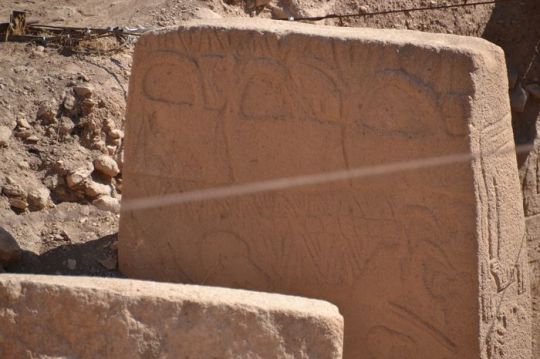
Slunchev Bryag
Nessebur (pop. 7,000), provides a striking contrast to Slunchev Bryag. It is a wonder-town, a fantasy come true, consisting of a rocky peninsula, some 900 yards long and 300 yards wide, jutting out into the sea, with lonely houses perched on it. A very narrow isthmus connects this island with the mainland. At night when it is all lit up, it resembles a floating ship, something out of this world.
Nessebur is now a museum town with fine old churches, the oldest of which were built in the 5 th and 6th centuries. Among them are the Old Metropolitan Church in the centre of the town. Its foundations and walls are still preserved; the Basilica near the shore is also worth seeing; the Church of St John the Baptist, built in the 10th century is entirely preserved. Its frescoes are from the 16th and 17th centuries, an archaeological museum is now housed in it. The Church of Stephan, 10th century, also known as the New Metropolitan Church has well preserved murals from 16th —17th century. The bishop’s throne and pulpit are decorated with wood- carvings.
Most churches are in the ‘pictorial style’ and were built in the 13 th-14th centuries such as the Church of St Theodore, of which only the northern and western facades are preserved city tours istanbul; the Church of St Paraskeva; the Church of Christ Panfokrator, in the centre of the town, comparatively well preserved; the Church of St John Aliturgetos, above the seaport.
In the town there is a permanent ethnographic exhibition of national costumes from the Bourgas area. It is held in the Mouskoyani House, built 1840 which is also the Head Office of the Nessebur Museums. TeL 34-94.
Hotel Messembria
Hotel Messembria, two stars, 24 beds and one suite, restaurant, bar, Rent-a-Car service. TeL 32-55.
About two kilometres west of Nessebur is the village of Aheioit chiefly known for the decisive battle which took place here on August 20, 917 between the Bulgarian troops of Tsar Simeon and the Byzantine troops led by Leo Foka in which the Byzantine troops suffered a defeat.
Some nine kilometres south of Aheloi is the town of Pomorie (pop. 12,000), situated on a narrow rocky peninsula. It was founded early in the 4th century B.C. under the name of Anhialo by emigrants from Apollonia (present-day Sozopol). All the wooden buildings were destroyed by fire in 1906. A small corner in National Revival style architecture has been preserved in the eastern part of the town next to the breakwater. Of particular interest is the burial mound near Pomorie. It is an early combination of the Thracian custom of beehive tombs and tumuli in the style of the Roman mausoleums. The tomb is fully restored and open to visitors. To the wsst of present-day Pomorie are the remains of an ancient settlement destroyed by the Avars in the 6th century. The sights include the Christ Church (1784) with valuable icons; the Monastery of St George (1856), whose wooden buildings are built round a quadrangle; Yavorov’s Rocks from where the Bulgarian poet, Peyu K. Yavorov, used to watch the sea.
Balkantourist hotels: Pomorie, two stars, overhangs the sea. It has 214 beds, two suites, restaurant, banqueting hall and night club Not far from the town is the Evropa camp site, two stars. Pomorie is well-known for its curative mud.
Balkantourist Bureau 49, N. Luskov Street.
0 notes
Photo

Slunchev Bryag
Nessebur (pop. 7,000), provides a striking contrast to Slunchev Bryag. It is a wonder-town, a fantasy come true, consisting of a rocky peninsula, some 900 yards long and 300 yards wide, jutting out into the sea, with lonely houses perched on it. A very narrow isthmus connects this island with the mainland. At night when it is all lit up, it resembles a floating ship, something out of this world.
Nessebur is now a museum town with fine old churches, the oldest of which were built in the 5 th and 6th centuries. Among them are the Old Metropolitan Church in the centre of the town. Its foundations and walls are still preserved; the Basilica near the shore is also worth seeing; the Church of St John the Baptist, built in the 10th century is entirely preserved. Its frescoes are from the 16th and 17th centuries, an archaeological museum is now housed in it. The Church of Stephan, 10th century, also known as the New Metropolitan Church has well preserved murals from 16th —17th century. The bishop’s throne and pulpit are decorated with wood- carvings.
Most churches are in the ‘pictorial style’ and were built in the 13 th-14th centuries such as the Church of St Theodore, of which only the northern and western facades are preserved city tours istanbul; the Church of St Paraskeva; the Church of Christ Panfokrator, in the centre of the town, comparatively well preserved; the Church of St John Aliturgetos, above the seaport.
In the town there is a permanent ethnographic exhibition of national costumes from the Bourgas area. It is held in the Mouskoyani House, built 1840 which is also the Head Office of the Nessebur Museums. TeL 34-94.
Hotel Messembria
Hotel Messembria, two stars, 24 beds and one suite, restaurant, bar, Rent-a-Car service. TeL 32-55.
About two kilometres west of Nessebur is the village of Aheioit chiefly known for the decisive battle which took place here on August 20, 917 between the Bulgarian troops of Tsar Simeon and the Byzantine troops led by Leo Foka in which the Byzantine troops suffered a defeat.
Some nine kilometres south of Aheloi is the town of Pomorie (pop. 12,000), situated on a narrow rocky peninsula. It was founded early in the 4th century B.C. under the name of Anhialo by emigrants from Apollonia (present-day Sozopol). All the wooden buildings were destroyed by fire in 1906. A small corner in National Revival style architecture has been preserved in the eastern part of the town next to the breakwater. Of particular interest is the burial mound near Pomorie. It is an early combination of the Thracian custom of beehive tombs and tumuli in the style of the Roman mausoleums. The tomb is fully restored and open to visitors. To the wsst of present-day Pomorie are the remains of an ancient settlement destroyed by the Avars in the 6th century. The sights include the Christ Church (1784) with valuable icons; the Monastery of St George (1856), whose wooden buildings are built round a quadrangle; Yavorov’s Rocks from where the Bulgarian poet, Peyu K. Yavorov, used to watch the sea.
Balkantourist hotels: Pomorie, two stars, overhangs the sea. It has 214 beds, two suites, restaurant, banqueting hall and night club Not far from the town is the Evropa camp site, two stars. Pomorie is well-known for its curative mud.
Balkantourist Bureau 49, N. Luskov Street.
0 notes